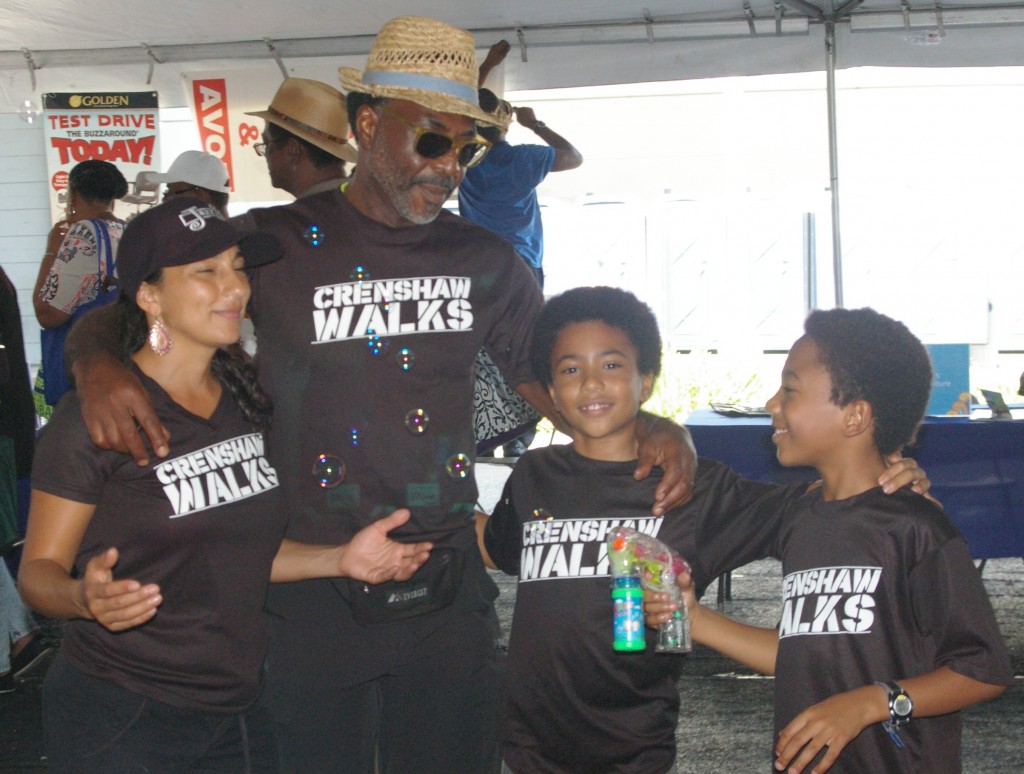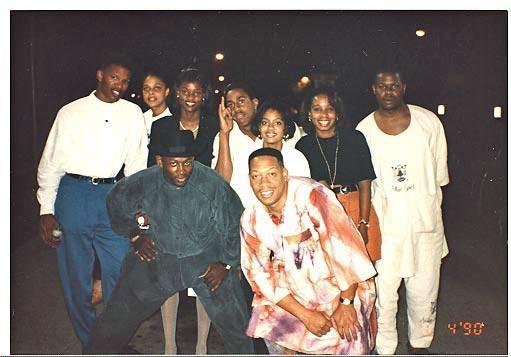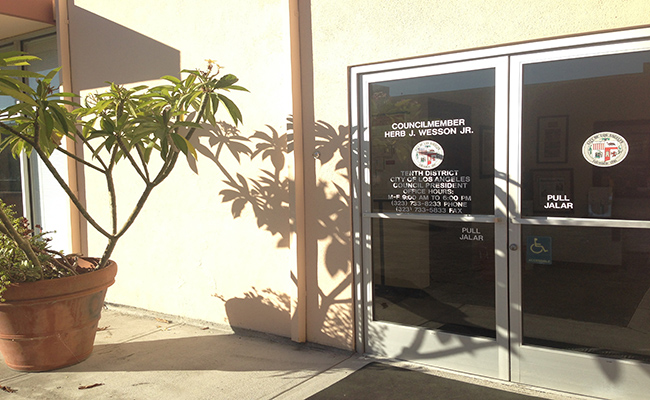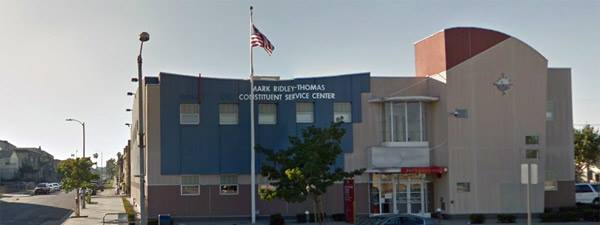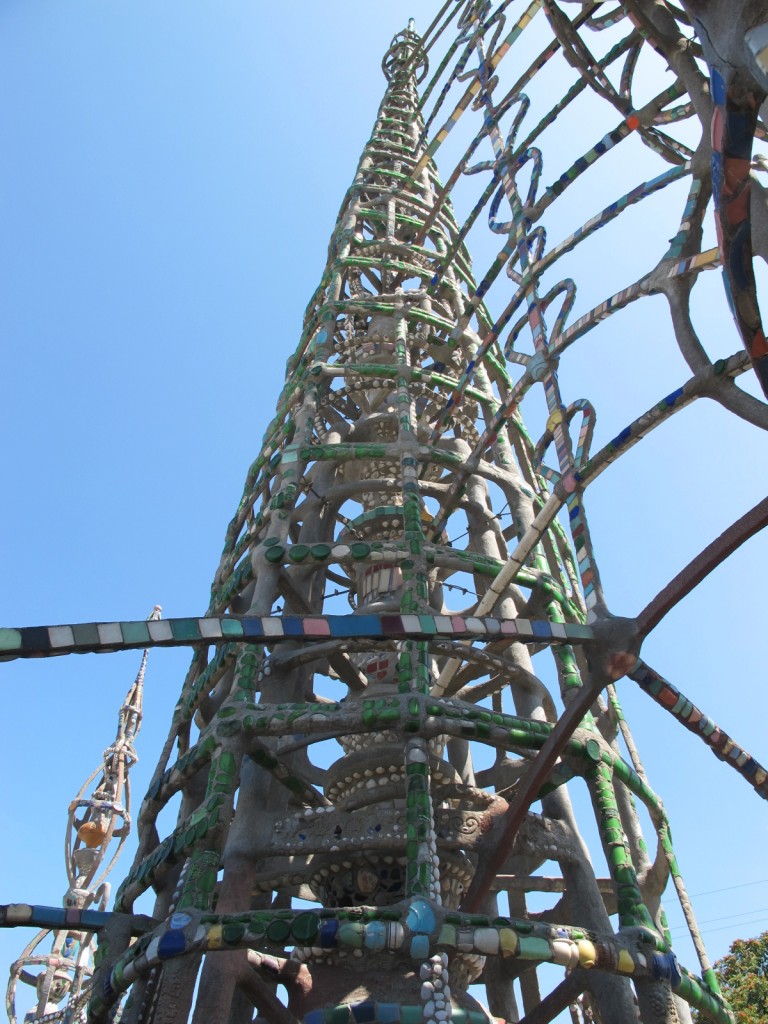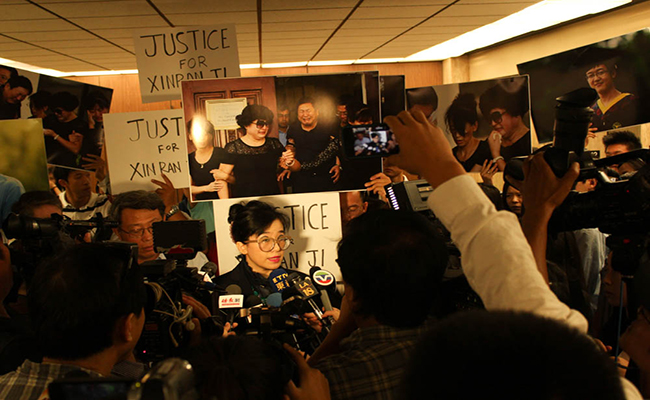
Rose Tsai, attorney for Xinran Ji’s family, speaks to reporters at the courthouse last summer, shortly following Ji’s death. | Daina Beth Solomon
By Daina Beth Solomon and Olga Grigoryants
Xinran Ji sprinted into the middle of the street toward his apartment near the University of Southern California last summer as three attackers dashed after, striking him one by one with a baseball bat. The 24-year-old engineering student then staggered home, where officers found him dead the next morning.
This was the account prosecutors presented in court Tuesday as they revealed video footage of the July 24 attack on Ji, a USC graduate student from China.
Deputy District Attorney John McKinney credited multiple surveillance cameras with helping bring murder charges against four teenagers.
“Once you know they were involved… it becomes clear who is who in the video, at least to me,” McKinney told reporters, holding a photo of Ji in graduation robes at his side. “And I think it will be to any fact finder.”
Jonathan DelCarmen, 19, and Andrew Garcia, 18, could face the death penalty for murder committed in the attempt of robbery. Two alleged accomplices, Alberto Ochoa, 17, and Alejandra Guerrero, 16 — exempt from capital punishment because they are minors — could face life in prison without parole. All are being held without bail.
USC tightened campus security following the spring 2012 murders of two graduate students from China, who were shot to death as they sat in a parked car near campus in what police called a robbery attempt gone wrong. And the university revved up safety measures yet again when an alleged gang member opened fire at a campus Halloween party the same year, wounding four people. Among the upgrades were installing security cameras and license plate readers.
See also: Brandon Spencer is paying a 40-year price for four shots that killed no one
About seven camera recordings painted a picture of the evening’s events, said Los Angeles Police Det. Matthew Courtney, who retrieved the footage from USC along with private companies. A university-operated license plate reader led officers to the defendants, he said.
The suspects circled the neighborhood in a dark, 1993 Honda Accord for several minutes before stopping near 29th and Orchard streets, said Courtney. There, a nearby camera captured three suspects exit the car and confront Ji, who had left the apartment earlier that evening for a study group on campus.
Ochoa was the first to turn the baseball bat on Ji, said the prosecutor. The suspect then passed it to Garcia, who chased Ji around the corner and slammed him again. Guerrero came quickly after, also striking Ji. DelCarmen drove behind the group, picking up his alleged accomplices.
Courtney said Ji’s roommate heard Ji sniffling when he returned around 3 a.m., but attributed it to a cold. She found him the next morning curled in his bed under a purple and white striped comforter, unresponsive.
When detectives entered, they discovered blood smeared on the floor, walls and bathroom sink. Red stains mottled Ji’s sneakers and white pants. As the prosecutor brought up an image of Ji’s white T-shirt soaked through in crimson, onlookers gasped, with one muttering: “Oh, God.”
A trail of blood splatters — on lobby walls, a UPS box and sidewalks — led detectives to the first attack site. Here, they recovered Ji’s metal-rimmed glasses, shattered.
The defendants watched these images projected onto a large screen attentively, without acknowledging each other or their families sitting alongside Ji’s supporters in the courtroom. DelCarmen, wearing a blue jumpsuit, and Guerrero, in orange, sat most of the day slouched and inexpressive. Ochoa, also clad in orange, raised his eyebrows and jiggled his right foot as the prosecutor displayed evidence. When a video of the attack was played, Ochoa took off his glasses and became still.
Garcia will be addressed separately. A judge said that the alleged accomplice, who made an outburst in court the day before, may be “incompetent to go through proceedings.” His lawyer did not attend Tuesday’s hearing.
A fifth person may also be involved: Prosecutors say a 14-year-old girl sat in the backseat of DelCarmen’s car. She has not been charged in Ji’s death. However, she is being prosecuted in juvenile court in connection with a second robbery that the gang attempted later that night at Dockweiler Beach.
One of two victims, Claudia Rocha, testified that she was sitting on a curb with a friend near a roadway overlooking the beach when Ochoa approached with a baseball bat over his shoulder. As he aimed it at her friend, Rocha suddenly found herself fending off the two girls.
“We just want the keys to the car,” she recalled Guerrero saying. Rocha responded she didn’t have a car, and Guerrero said, “Then give us your purse.” As Rocha resisted, Guerrero pulled out a pocket knife and slashed at her purse strap.
Police arrested all five suspects by the following morning, quickly linking their license plate and the bat to Ji’s killing.
McKinney will present additional evidence Wednesday, planning to call on Rocha’s friend, the coroner and other detectives to provide further details of Ji’s death.
Like Intersections on Facebook, follow us on Twitter and sign up for the Newsletter to stay in the loop on news and views from South L.A.










